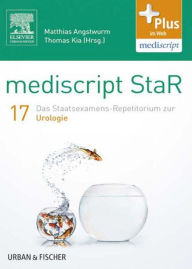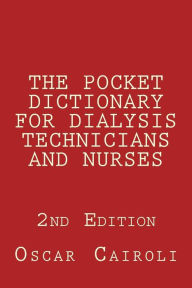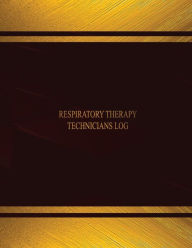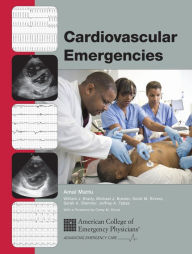Pre-eclampsia, (Pregnancy with Hypertension And Proteinuria) A Simple Guide To The Condition, Diagnosis, Treatment And Related Conditions Kenneth Kee
by Kenneth Kee
2020-04-22 04:25:33
Pre-eclampsia, (Pregnancy with Hypertension And Proteinuria) A Simple Guide To The Condition, Diagnosis, Treatment And Related Conditions Kenneth Kee
by Kenneth Kee
2020-04-22 04:25:33
This book describes Pre-eclampsia, Diagnosis and Treatment and Related DiseasesRecently we had a few cases of pregnant mothers with pre-eclampsia losing their fetuses.It is heart breaking especially if the mother is having her first pregnancy and the...
Read more
This book describes Pre-eclampsia, Diagnosis and Treatment and Related DiseasesRecently we had a few cases of pregnant mothers with pre-eclampsia losing their fetuses.It is heart breaking especially if the mother is having her first pregnancy and the fetus is fairly advanced.It is therefore important for a pregnant mother to know about pre-eclampsia.Pre-eclampsia is when a pregnant woman forms high blood pressure and protein in the urine after the 20th week of pregnancy.Pre-eclampsia is described as pregnancy-induced hypertension together with proteinuria (>0.3 g in 24 hours) with or without edema.Almost any organ system may be affected.Pre-eclampsia is a fairly frequent disorder that may become life-threatening for the mother and the fetus.It is featured by maternal hypertension, proteinuria, edema, fetal intrauterine growth limitation and premature birth.Severe pre-eclampsia is defined as diastolic blood pressure (BP) of at least 110 mm Hg or systolic BP of at least 160 mm Hg, and symptoms, and biochemical and hematological damage.In severe pre-eclampsia, the fetus and newborn may have neurological injury caused by hypoxia.Prompt detection of pre-eclampsia and signs of medical damage, such as any decrease in platelet count, needs urgent referral to hospital to prevent the serious medical effects of these disorders.Eclampsia is described as the episode of one or more convulsions superimposed on pre-eclampsia.CausesThe precise cause of pre-eclampsia is not known.It is featured by suboptimal utero-placental perfusion linked with a maternal inflammatory response and poor maternal vascular endothelial function.This in turn results in vascular hyper-permeability, thrombophilia and hypertension, which may balance the reduced flow in the uterine arteries.A protective part of heme oxygenase 1 and its metabolite carbon monoxide may be affected.The placenta has a pivotal part in the formation of pre-eclampsia.It happens in about 3% to 7% of all pregnancies from:1.Autoimmune disorders2.Blood vessel problems3.The diet4.The genesSymptomsOften, women who have pre-eclampsia do not feel ill.Pre-eclampsia is defined by systolic BP >140 mm Hg or diastolic BP >90 mm Hg in the second half of pregnancy, with ≥1+ proteinuria on reagent stick testing:Diagnosis:1.High blood pressure, often higher than 140/90 mm/Hg2.Swelling in the hands and face3.Weight gain4.Protein in the urine (proteinuria)5.Higher-than-normal liver enzymes6.Platelet count that is low7.Ultrasound assessment of fetal growth and the volume of amniotic fluidTreatment:The only way to cure pre-eclampsia is to deliver the baby.1.Bed rest, and lying on the left side2.Drinking plenty of water3.Eating less saltHospital:1.Close monitoring of the mother and baby2.Medicines to control blood pressure and seizures3.Steroid injections for pregnancies under 34 weeksThe baby must be delivered if there are signs of severe pre-eclampsia:1.Tests that show the baby is not growing well or is not getting enough blood and oxygen2.The bottom number of the blood pressure is over 110 mmHg3.Abnormal liver function4.Seizures or alterations in mental function (eclampsia)5.Fluid buildup in the mother's lungs6.HELLP syndrome7.Low platelet count8.Low urine outputHigh blood pressure:1.Labetalol2.Nefidipine3.HydralazineSeizures:Magnesium sulfate to control seizuresFluid balance:Fluid restrictionDelivery:The decision to deliver should be made once the woman is stableIf the fetus is less than 34 weeks, steroids are givenVaginal delivery is suggested after 37 weeks but caesarean section tends more likelyPostpartum review of BP and mother and baby is needed.TABLE OF CONTENTIntroductionChapter 1 Pre-eclampsiaChapter 2 CausesChapter 3 SymptomsChapter 4 DiagnosisChapter 5 TreatmentChapter 6 PrognosisChapter 7 ProteinuriaChapter 8 HypertensionEpilogue
Less






























